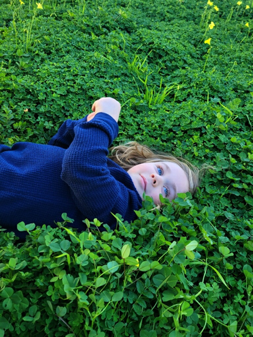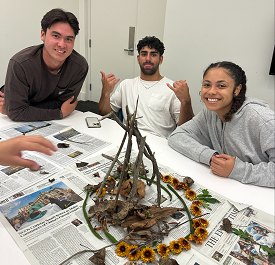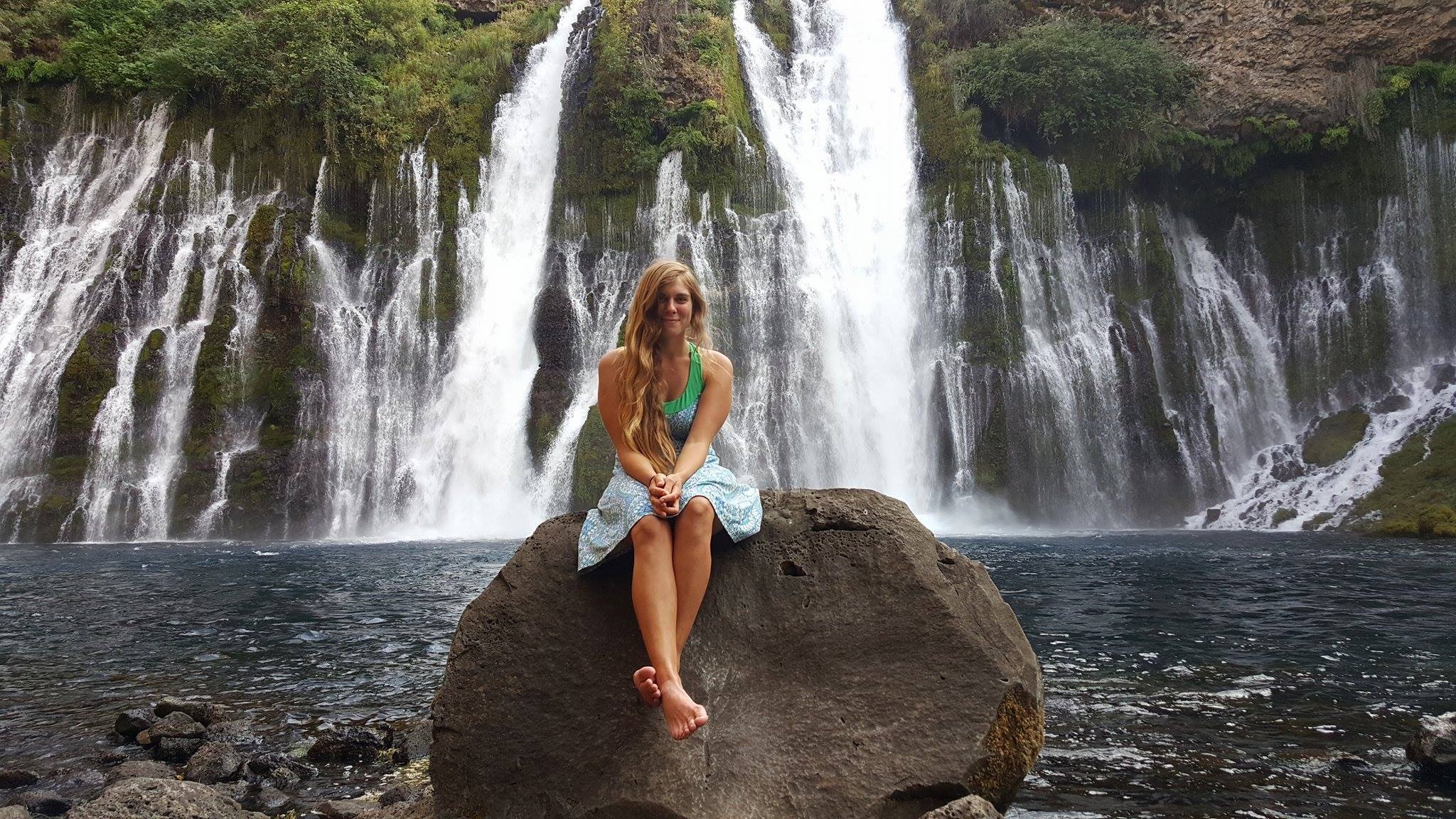Classroom Activities for Climate Optimism (as an Antidote to Eco-Anxiety)

Grief, despair, and anxiety are reasonable responses to climate chaos and the devastating losses of all kinds we are experiencing on the planet. In her 2023 book Climate Optimism, Zahra Biabani defines eco-anxiety as extreme worry about future and current harm to the environment caused by human activity and climate change. She states that climate optimism is the proclamation of hope for a healthier and more just planet and the pursuit of actions aligned with what needs to be done to get there.
 Climate optimism is important because it motivates us to take action as a result of hope in the future and belief in the efficacy of our efforts. (See photo, left, of my grandson, oblivious to the notion of eco-anxiety and enjoying nature!) However, despair leads to hopelessness and inaction. If we feel doomed, we see no point in trying to work toward a better world. In fact, action is the antidote to despair.
Climate optimism is important because it motivates us to take action as a result of hope in the future and belief in the efficacy of our efforts. (See photo, left, of my grandson, oblivious to the notion of eco-anxiety and enjoying nature!) However, despair leads to hopelessness and inaction. If we feel doomed, we see no point in trying to work toward a better world. In fact, action is the antidote to despair.
Reasons to Be Optimistic
I recently asked the students in my college class focused on the environment what makes them most pessimistic as well as optimistic about the future. In terms of what makes them most optimistic, they wrote:
-
- Youth education and caring
- Intersectional activism
- Social and environmental justice movements
- Our capacity for change
- Human ingenuity
- Compassion as individual and collective driver
- Regenerative solutions
- Empowering stories of resilience
- Learning about many people working on solutions
- Time has not completely run out
- Engaged learning/action to address problems
 See my students in the image, right, doing a nature-based art activity.
See my students in the image, right, doing a nature-based art activity.
There are a multitude of reasons to be cheerful, which is also the name of a wonderful site begun by David Byrne of the band Talking Heads, which contains short articles filled with positive climate- and environment-related news and action from around the world. You can have students work in pairs and each choose a different short article to read and summarize for the class.
Encouraging Climate Optimism and Action in Your Classrooms: Classroom Activities
As teachers of multilingual learners of English, we must discuss the environmental problems we are facing, along with solutions to these, where often these solutions involve young people who serve as inspiring role models. However, my approach to teaching environmental issues and climate-related content in linguistically diverse classrooms is always to begin with students’ lived experience. Try the following activities!
-
- Have students do a 10- to 15-minute in class write or sketch on how they feel about the future and what role climate plays in that. Discuss as a class. As described above, you can chart what makes you most optimistic and most pessimistic. You can also brainstorm a list of issues, which, if effectively addressed, would help to build a better world.
- Use backward design, where the unit lessons prepare the students to successfully complete a final project, which is the unit assessment. In this case, have students design their own environmental project targeting a specific cause or need in a given area, after studying many examples of others’ efforts. To this end, expose students to many issues, people, organizations, and solutions in order to give as much background information and food for thought as possible.
- Begin by doing some whole class learning. For example, you could watch videos to learn about sisters in Bali who worked for years toward a ban on plastic bags there, or about the Dutch teen who persevered for years until he had a working model and eventually multiple Ocean CleanUp vessels intercepting plastics and other trash in the Great Pacific Garbage Patch and elsewhere. You can study websites to learn about others, or study the highly successful company and global brand Patagonia, which now devotes all of its profits to its only shareholder, Mother Earth! I almost always share with my students the work of poets, musicians, activists, and scholars, like Lyla June — who is all four of these and more.
- Focus on solutions-based, inspirational global content relevant to multilingual learners of English.
- Rather than having each student study every person or initiative, as a class divide up various focal people and organizations into pairs or small groups such that you learn as a class with and from each other, where all take responsibility for teaching the class about some aspect of the lesson as a jigsaw activity. Recently, these lessons in my classes included:
-
-
-
- The North American Association of Environmental Education’s (global) 30 Under 30, which each year recognizes 30 young adults under 30 years old making a difference by taking initiative in some area of interest and social/environmental need.
- The Right Livelihood Awardees, who each year are recognized for offering practical and exemplary answers to the most urgent environmental and other challenges facing the world. In 2023, recipients included Kenyan Phyllis Omido for her work to secure land and environmental rights for local communities and the group Mother Nature Cambodia for their fearless activism to preserve the country’s natural environment (and the related short documentary Evergreen Resistance).
-
-
Using this content, each pair would focus on two to three NAAEE 30 Under 30 recipients, and each small group would research one Right Livelihood awardee and share that person and project with the class.
-
- Working individually or in small groups, students research a local-, regional-, or country-level environmental need or ecological issue and design a feasible project to address it, following detailed guidelines, but allowing for creativity and requiring deep learning. Projects and proposed solutions are presented to the class or community as a culminating activity. I recommend allowing for differentiation of the final product, especially where you have learners at very different language proficiency levels, where these could include a poster, video or mini-documentary, brochure, graphic novel/comic, legislative bill proposal, research report, song, play/skit, or other appropriate format. The more diverse the class, the more differentiation is important.
- In addition to your feedback, have students give each other constructive feedback on their project presentations as well as ideas for implementation. If you have the bandwidth and your students have the interest, consider having students vote on the most valuable project with the greatest potential, and then brainstorming ideas for a fundraiser to raise seed money to pilot the project.
- Finally, remind students that their ideas, projects, and actions matter and are the antidote to eco-anxiety.
I’ve done some version of this unit with my classes the past several semesters, and students have created fantastic local projects of all kinds, including artwork for visitors to identify birds commonly sighted at a local wetland restoration area, creation of a web-based urban garden archive, and a questionnaire regarding nature therapy, in collaboration with a community garden.
Things You Can Do Today
Watch this short TED Talk by marine biologist Ayana Elizabeth Johnson on finding joy in climate action. Try out Johnson’s Venn diagram activity for yourself and as appropriate with your students (which I do with my students).
In addition, learn about two related movements that are additional reasons to be optimistic: the Rights of Nature movement, which grants legal rights to nature, and the global 30 x 30 initiative, which aims to preserve 30% of Earth’s terrestrial and marine habitats by the year 2030. I will discuss these in my next blog. Until then, engage in climate optimism by taking action at any scale — and enjoy!

My daughter (who taught me that “naturalist” intelligence is real) at McArthur-Burney Falls Park in California, as she hiked north on the Pacific Crest Trail from Mexico to Canada.

